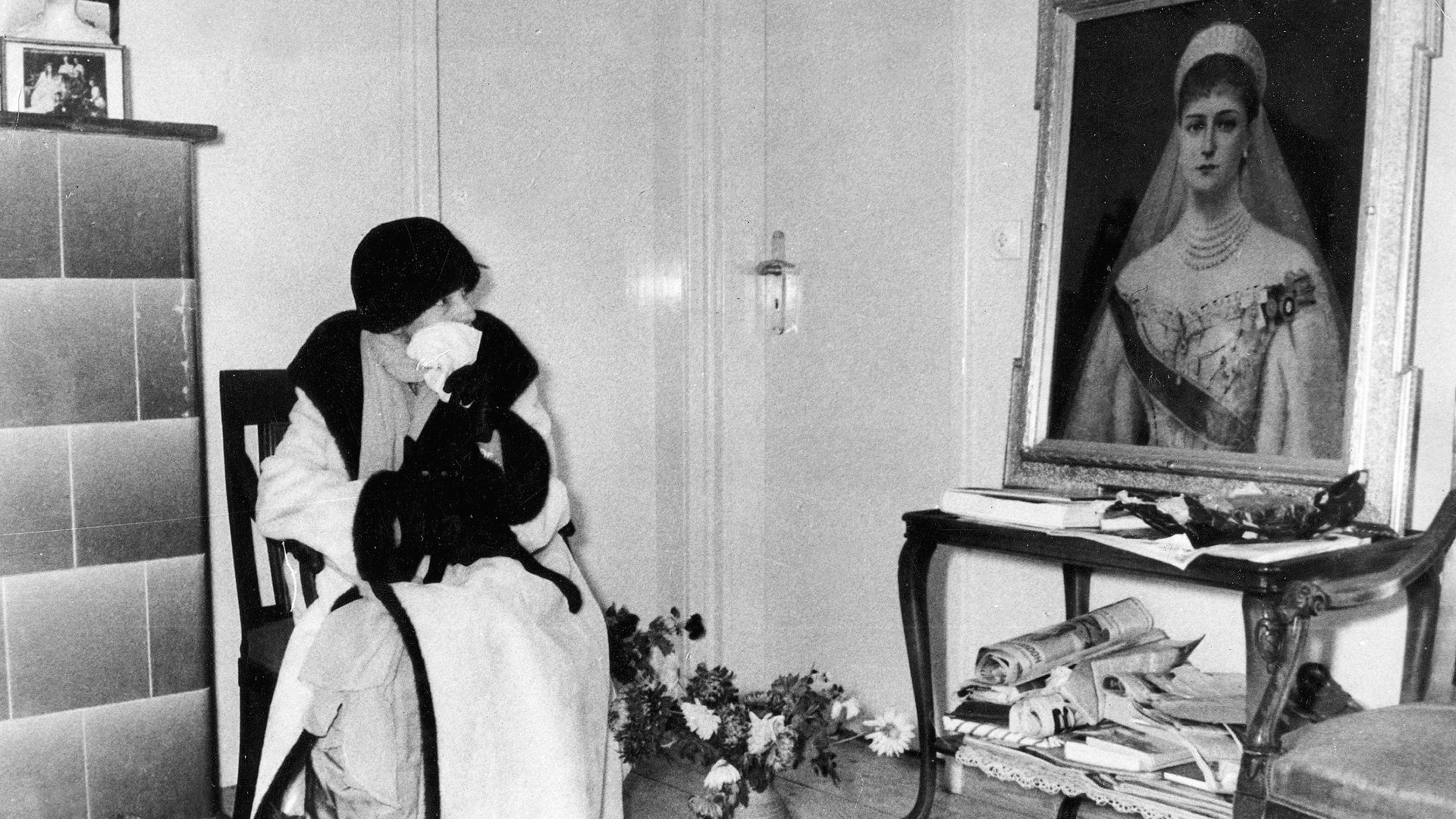When found they were 60 miles from home. On December 3, 1981, a diner owner in Amherst, Virginia, tipped off police after a man had bought coffee and taken it back to the battered 1968 green Futura wagon that had been parked outside an empty house for a couple of days. Looking closer, she could see an old woman sitting in the passenger seat with a blanket round her. The elderly couple appeared to be living in the vehicle.
When police arrived there was no sign of the man, and the woman became agitated, shouting at the officers that they would never take her alive. She gave her name as Jones, but officers knew they had found 82-year-old Anastasia Manahan, missing for three days after being abducted by her husband from the University of Virginia hospital in her home town of Clarksville.
Two months earlier, John Manahan, a retired history professor, was declared incapable of looking after his wife. Concerned neighbours had alerted authorities that the door to their home, where the couple had lived since their marriage in 1968, seemed permanently open in all weathers.
Weeds and rubbish had accumulated around the property, and most days the old woman would sit for hours in the passenger seat of an abandoned car at the roadside packed with junk, eating chips and occasionally screaming. Inside the house around 40 cats had the run of the property, none of them housetrained. A court order placed Anastasia Manahan in hospital, but her husband spirited her away almost immediately. Search alerts were distributed across 13 states.
When Manahan returned, he was polite to the officers and before long began telling them that his wife was not just the wife of a retired academic. In fact, he said, she was the Grand Duchess Anastasia of Russia who had survived the massacre of the ruling Romanov family by the Bolsheviks in Yekaterinburg in 1918 and had been rescued by a Polish soldier. For the first time since the police arrived, Anastasia stopped shouting.
On a cold day in Karlsruhe, near Frankfurt, in February 1970, the woman who would become Anastasia Manahan, known then as Anna Anderson, waited for the final verdict. This was her last chance, the end of the legal road. She was appealing to the Supreme Court of West Germany to overturn an earlier decision by a Hamburg court declaring Grand Duchess Anastasia dead along with the rest of her family.
Karlsruhe represented Anderson’s last chance to legally establish that she was the Russian princess. For half a century she had been at the centre of a global controversy and relying upon the hospitality of strangers, some of whom were members of European royal households, others, like the composer Sergei Rachmaninoff, just sympathetic to her cause.
Sometimes it felt like her message was getting through. Having travelled to the US in the late 1920s, ostensibly for surgery on her jaw allegedly broken in the murderous attack by the Bolsheviks, Anderson became for a while the toast of a New York society that accepted her as the woman she claimed to be. Displays of erratic behaviour saw her institutionalised, not for the first or last time, but this was her first taste of a celebrity status that would dominate her life, whether she liked it or not.
Two films were made of her story in which she was played the German actress Lilli Palmer and by Ingrid Bergman. The Bergman version left the question of whether Anderson was telling the truth very much open.
Books were written, some supportive, some condemning her as a fraud. Strangers called on her, even in the years after the second world war when she tried to live quietly in a remote cabin on the edge of the Black Forest, firing questions and accusations at her on her own doorstep.
In her favour were scars and marks on her body that could have been caused during the massacre in the cellar in 1918. Some members of the staff were convinced she was Anastasia by her looks alone. Others pointed out that Anderson spoke mainly in German, a language Anastasia couldn’t speak, and understood neither French nor English, languages in which the princess was fluent.
She changed her story several times, at one stage claiming that the entire Romanov family had been replaced by doubles after fleeing their revolution-fomenting nation five years before the events of 1917, taking a train they operated themselves all the way from St Petersburg to Germany. Her father, the Tsar Nicholas, died in Denmark in 1928, she said, but the Danes would not have known he was there as he had shaved off his beard.
A private investigator hired by the remaining Romanovs insisted Anderson was a Polish woman named Franziska Schanzkowska who had disappeared in 1920 and whose scars were the result of a 1916 grenade explosion in the munitions factory where she worked.
In Karlsruhe on February 17, 1970, word came through that the court had reached a decision. Anderson and John Manahan took their seats and listened as the judge announced he was upholding the verdict of the Hamburg court.
Fifty years earlier, almost to the day, on February 27, 1920, a young woman had jumped off a bridge over the Landwehr Canal in Berlin in an attempt to drown herself. Pulled from the water by a passing policeman, she had no papers and refused to identify herself so was committed to an asylum in Dalldorf as Fräulein Unbekannt, “Miss Unknown”. She would remain there for two years. It would be six months before she spoke.
When rumours began to circulate in Europe that one of the Romanov princesses had survived the massacre, a fellow Dalldorf inmate developed a theory that the unknown woman might be Grand Duchess Tatiana. She was plausible enough to convince an exiled Russian noble to visit the asylum and declare the woman not tall enough to be Tatiana.
“I did not say I am Tatiana,” said Fräulein Unbekannt, her first words since her arrival. She spoke, it was noted, in German with what appeared to be a Russian accent. When she refused to say anything more, the aristocrat showed her a list of names of the Romanov girls, asking her to cross out those that did not match her identity. She put lines through all of them except Anastasia. Her life’s course was set.
The woman who lived the second half of her life as Anastasia Manahan died in 1984. After the fall of the USSR in the 1990s, the first of the Romanov bodies were exhumed and DNA tested. By 2007 tests had accounted for the whole family – including Grand Duchess Anastasia. When DNA from the woman who died in Virginia was checked, it proved her beyond doubt to have been Franziska Schanzkowska.
One mystery was solved; a perhaps even more intriguing one – why Anna Anderson did what she did – remains.




